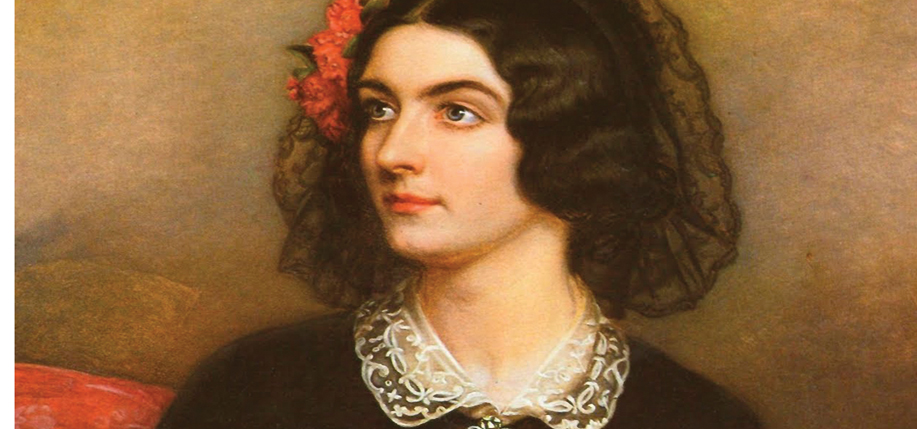There was a time in the mid-19th century when all Europe raved about the Spanish dancer, Lola Montez, not realizing that she wasn’t Spanish and couldn’t dance. She wowed them in Paris, London, Berlin and St. Petersburg with her famous Spider Dance, a number that had Lola wearing a black mantilla, clicking castanets and shaking tarantulas out of her petticoats. When the hairy (though imaginary) creatures fell to the floor she violently stomped them with her oversized high heels.
The toast of Paris and fixture of haute monde nightlife, Lola counted Franz Liszt, George Sand and Alexander Dumas as intimates. Still, it was at the Paris Opéra that the jig, as it were, was up. One reviewer panning her performance asked, “She hablas very mediocre Spanish…what country is she really from?” A good question because despite her name, mantilla and castanets, Lola didn’t have a drop of Spanish blood. She wasn’t British, notwithstanding her bigamous marriage to a British officer. Nor was she German even though the lovesick old King Ludwig I, tried to make her his Queen, an initiative that got them both booted out of Bavaria. Nor American either, although she loved this country, spent her final years here and is buried in Brooklyn. Lola was Irish, born Marie Eliza Rosanna Gilbert in 1821, at Grange, County Sligo.
Her father died when she was a baby and her relationship with her mother was always fraught, especially after the 17-year-old Lola ran off with her mother’s lover. Abandoned, Lola found herself alone, penniless and forced to rely on her resources– brains, beauty and a talent for reinvention. She adopted a new name (Lola) and a new persona (artiste) and after a besotted boyfriend gave her a Paris theatre, she added impresario to her résumé. When the boyfriend was killed in a duel – Lola, it should be noted, had terrible luck with men – she went to Germany and soon her Bavarian adventure began.
King Ludwig I was in love with her but unable to make her Queen. He did, however, lavish her with money, jewels and even a title, the Countess of Landsfeldt. But, apparently, the King was the only person in Bavaria who felt kindly about Lola. “That Foreign Whore” was one of the milder knocks the people had for her, and they didn’t even know she was having an affair with a young student! She actually caused a revolution and Ludwig was forced to abdicate.
Back on the continent, Lola found another husband, George Heald, a cavalry officer with a sister who went to court to have the marriage annulled. She shouldn’t have bothered since the Healds soon separated mainly because Lola stabbed her husband with a stiletto. Never at a loss for ideas, Lola composed an operetta, “Lola Montez in Bavaria,” an opus that wisely redacted the parts about the student lover and her (failed) attempt to blackmail Ludwig. She took the show to America, where her notorious reputation had preceded her and rocked the gold towns helped along, no doubt, by her scanty costumes. She moved to San Francisco, married a journalist, took up gardening and oddly, raising pet bears. Lola’s bad luck kicked in when the husband took off, the bear bit her and she was penniless once again.
The enterprising Lola managed to raise money to form a troupe of actors and brought her Spider Dance revue to the Australian Outback. She revamped her routine, adding a whip and, some said, subtracting her underwear, a scandal that forced her to leave Australia (she once used the horsewhip outside the theatre, on a critic). None of this mattered though since, for the first time in her life, Lola was in love. She and her leading man made a happy couple as they sailed from Australia. Happy, that is, until a storm swept him overboard. His death transformed her life and, for reasons known only to Lola, she headed to Brooklyn. It was there she wrote books and worked with fallen women, helping them rebuild their lives. When she received the last rites, her hand was on the Bible, open to the pages about Mary Magdalene.
Today her grave is a stop on Brooklyn’s Green-Wood Cemetery tour. She served as the inspiration for the Richard Adler and Jerry Ross song, “Whatever Lola Wants, Lola Gets.” and as recently as April 2013, Volbeat, a Danish metal band had a hit with the song, “Lola Montez.”
Feel the fire where she walks
Lola Montez is so beautiful
Blinding your eyes with her spider dance
Feel the fire where she walks.


She was also celebrated in historical fiction by the late George McDonald Fraser.
This is excellent on the part of this paper to publish intellectual,educational, and historical stories like this.